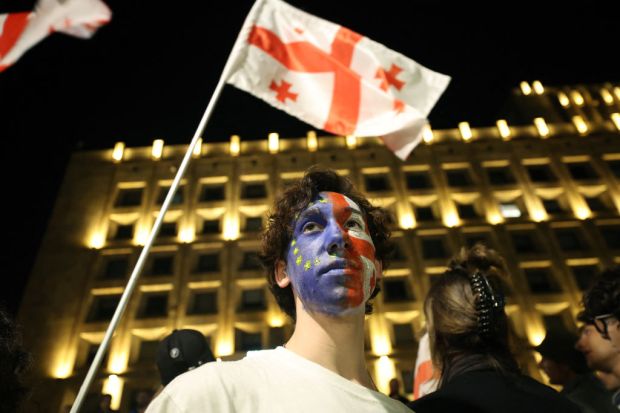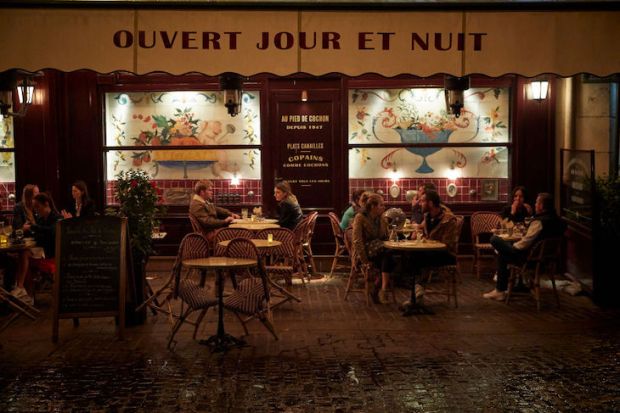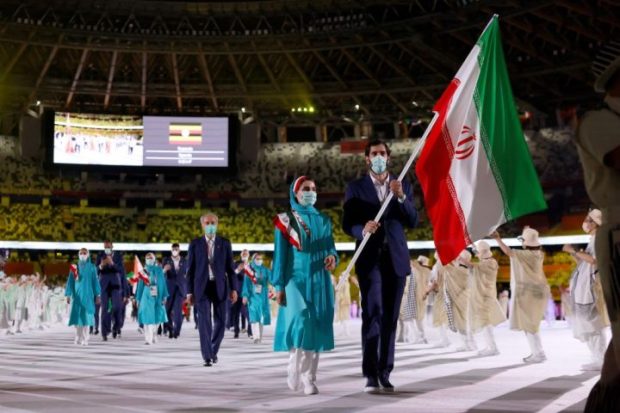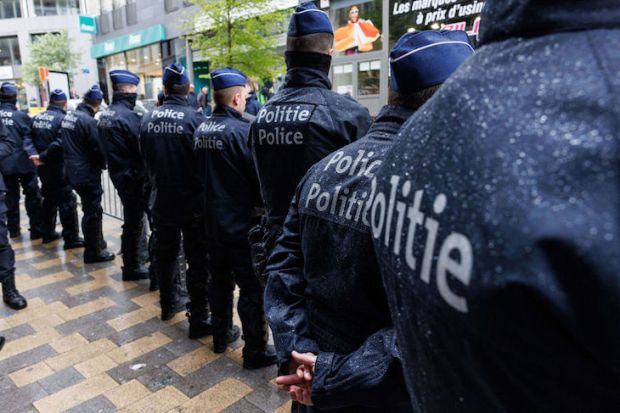There is a growing sense of unease in France that a new wave of Islamist terrorism will soon break over Europe. In February, Adel Bakawan, a Franco-Iranian specialist in Islamic extremism, said that the Islamic State is regrouping and is planning a mass casualty attack in ‘Berlin, London or Paris’. This week Thibault de Montbrial, president of the Centre for Reflection on Homeland Security, spoke in similar terms during a radio interview.
While Isis, or the Islamic State, no longer has a caliphate as it did between 2014 and 2019, it still has many fanatical followers scattered in Iraq, Syria and Afghanistan. Referencing a report written by the Dutch intelligence services in May, de Montbrial said that the Islamic State ‘has already started reintroducing active commando units’ into Europe with the intention of attacking the West.
Since 2015, no lessons have been learned, and few improvements made to strengthen Europe’s borders
The route used by the Islamic State is from Syria and Afghanistan, coming through Turkey and then heading for Germany or Sweden because, de Montbrial said, these countries ‘are considered to be the most Islamic in terms of numbers’. In his opinion, the ease with which the Islamic State has been able to infiltrate its fighters into Europe is down to the ‘absolutely tragic’ decision of Angela Merkel in 2015 to thrown open Europe’s borders to more than a million migrants and refugees.
It is not only security experts sounding the alarm. In April, the DGSI (Direction Générale de la Sécurité Intérieure), France’s equivalent of MI5, issued a communique entitled: ‘The state of the terrorist threat’. It began with some statistics: since 2012, 271 people have been killed in France by Islamist terrorists and nearly 1,200 wounded. Those grim figures would have been higher had not 71 attacks been foiled, 63 by the work of the DGSI.
According to de Montbrial, French intelligence services (working closely with their American and Israeli counterparts) ‘are doing a fantastic job’. They are, he said, fully supported by successive governments which have adapted well since 2015, when two decades of complacency were exploited by Islamists with a series of bloody atrocities. The challenge, says de Montbrial, is that Europe is ‘facing a large-scale wave over the long term’.
The DGSI communique warned that the Islamic State’s ‘capability remains intact’, and it also cautioned that Al Qaeda has new designs on the West. Once the pre-eminent Islamic terror organisation, Al Qaeda has been overshadowed by the Islamic State in the last decade. Nevertheless, it has affiliates in Africa, particularly in Somalia and the Sahel, who are ‘distinguishing themselves locally by their rise in operational strength’.
Also increasingly active in Africa is the Islamic State. According to Wassim Nasr, the author of Islamic State: Fait Accompli, they have an ‘abiding interest in Africa, now the epicentre of jihadist activity around the world’.
Then there is the threat from homegrown extremists who belong neither to the Islamic State or Al Qaeda. These are fanatics often described by the western media as ‘lone wolves’ – a term rejected by most terrorist experts.
France’s pre-eminent authority on Islamic extremism, Gilles Kepel, has coined the phrase ‘atmospheric jihadism’ for these zealots, whom he describes as ‘angry entrepreneurs’. Usually young and impressionable, they are groomed on social media by older Islamists whose strategy is the ‘creation of a culture of rupture with the Republic and its values…something that will then quite naturally create the designation of the other as an infidel’. The 18-year-old killer of the schoolteacher, Samuel Paty, was one such example.
There was an ominous conclusion to the DGSI communique. ‘The risk of a projected threat, which has diminished in recent years, could re-emerge as a result of certain regional developments,’ they forecast.
This was echoed last month by France’s interior minister, Gérald Darmanin, during a trip to New York to discuss international security cooperation. In an interview, Darmanin said that while American homeland security is focused on ‘white supremacism, repeated shootings, conspiracy theories’, the greatest threat in Europe is from ‘Islamic terrorism’.
It is no surprise that France is worried. In September, they host the Rugby World Cup and in the summer of 2024 they welcome the world for the Paris Olympics. It will be a security nightmare and, according to a report in Le Figaro, security services are practising for the worst-case scenario of a ‘dirty bomb’ attack.
One might have hoped that, faced with so many grave warnings, Europe would have exhibited more collective determination to police its borders. It’s what the people want, as shown in repeated opinion polls. But the majority of the political class remain wedded to the idea of free movement despite the danger this poses to the continent.
After the Paris massacre of 2015, when 130 people were killed in a series of co-ordinated attacks, Frontex, the EU Border Agency, published a 76-page report. It couldn’t have been more explicit: ‘The Paris attacks in November 2015 clearly demonstrated that irregular migratory flows could be used by terrorists to enter the EU,’ it stated. It then described how two of the Islamic State terror cell had exploited the migrant route to enter Europe using ‘fraudulent Syrian documents to speed up their registration process.’
Since then, no lessons have been learned, and few improvements made to strengthen Europe’s borders. If anything the chaos and disorder has intensified, and the numbers of migrants and refugees arriving this year are approaching a scale not seen since 2015. Europe can only hope that among them are not men sent by the Islamic State.
Got something to add? Join the discussion and comment below.
Get 10 issues for just $10
Subscribe to The Spectator Australia today for the next 10 magazine issues, plus full online access, for just $10.





















Comments
Don't miss out
Join the conversation with other Spectator Australia readers. Subscribe to leave a comment.
SUBSCRIBEAlready a subscriber? Log in